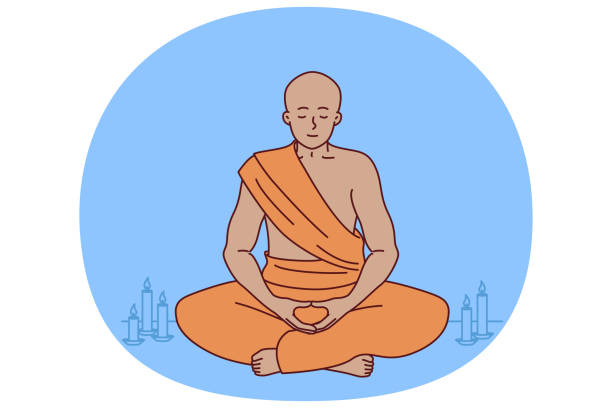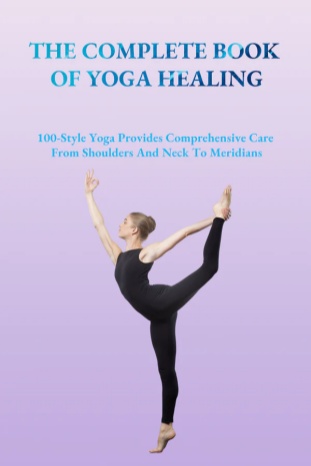The Wisdom of Zen Practice: Relaxation, Mindfulness, and Method
Remain with Right Mindfulness
Even when your mind is free from delusive thoughts during Chan meditation, it is essential to maintain right mindfulness. This means never departing from the method. At all times and in all places, stay attentive to your continuity of mindfulness. Let your body and mind become one, until you forget both body and mind and only the method remains.
- ? Recommended Reading: Zen Wisdom: Conversations on Buddhism

Relax Body and Mind
The first condition for a Chan practitioner is to relax the body and mind. Relax the head, the nerves, and the muscles. Once relaxed, applying the method will become more effective. Do not be tense when using the method. Whether deliberately or naturally, place your attention gently on the method. This way, you won’t expend excessive physical energy.
During meditation retreats, five to six hours of sleep per day is sufficient. After meals, drowsiness may occur because the stomach is digesting and blood flow to the brain is reduced—this is normal and nothing to worry about.
I once published a book in London called Catching a Feather on a Fan. The title symbolizes the idea that you cannot force things; instead, you must be careful and gentle. Holding your mind on the method is like placing a feather on a fan—not chasing it, but allowing it to rest naturally. If you try to chase the feather with the fan, it will never settle. Likewise, if you use the method with tension, you will only become more fatigued and disturbed by thoughts. Your mind will not calm down. Please reflect deeply on the correct attitude toward using the method.
Apply effort with a relaxed and unhurried heart—though these seem opposite, Chan practice teaches us patience and persistence. With a natural and calm attitude, you will quickly find inner stability. Don’t worry about wandering thoughts or drowsiness. When they arise, simply return to the method.
Guarding the Six Sense Faculties
We have eyes, ears, nose, tongue, body, and mind. During meditation, aside from breathing through the nose, eating with the mouth, observing demonstrations with the eyes, listening to teachings with the ears, practicing with the body, and contemplating with the mind, you must close the rest of the six faculties.
Avoid letting the six sense faculties be disturbed by the six sense objects. Do not let the six types of consciousness seek external objects. Use the “mind’s eye” to observe whether you are truly applying the method; use the “mind’s ear” to hear the silent voice of your practice.
Buddhism is known as the “inner science.” It teaches us to reflect inward with a tranquil mind.
The first step in inner observation is to use the six types of consciousness (eye, ear, nose, tongue, body, and mind) but not the six faculties. If you can rely solely on the sixth consciousness (mind), then external phenomena—sights, sounds, bodily sensations—will no longer disturb you.
When the mind turns outward, it perceives very little. When it turns inward, it begins to experience infinite space and timeless awareness.
- ? Recommended Reading: Zen Wisdom: Conversations on Buddhism
Four Primary Methods of Chan Practice
1. Following the Breath, Counting the Breath
Following the breath can be done through the nose or the abdomen.
- Nose breathing: focus on the sensation of the breath entering and exiting the nostrils. Do not pay attention to length, depth, or any other sensations.
- Abdominal breathing: focus on the gentle movement of the abdomen with the breath. Do not control or guide the breath. Only choose one—nose or abdomen—and stick with it.
Counting the breath usually involves counting exhalations, as they are slower than inhalations. Count from 1 to 10 and then repeat. If there are too many wandering thoughts, try counting backward from 10 to 1 or 20 to 2, even alternating odd and even numbers.
If you lose count or count too far, don’t be discouraged. Just start over. Once, a PhD in mathematics told me he couldn’t count to ten without losing track. I told him: “Counting the breath is not solving a math problem. Even counting to five and restarting is fine. What matters is that wandering thoughts decrease.”
- For more insightful books on mindful living, healthy eating, fitness habits, meditation practices, philosophical reflections, and the art of nurturing pets, stay tuned. We’ll continue to share thoughtful selections to nourish your body, mind, and spirit.
2. Reciting the Buddha’s Name
Some people feel discomfort using breath-counting—it may cause chest tightness or fatigue. In such cases, recite a Buddha’s name, like “Namo Amituofo” or “Namo Guanshiyin Pusa.” Recite one line and count one number: “Namo Amituofo one, Namo Amituofo two…” Count from one to ten, then repeat. Do not combine this with breath control. Recite too slowly, and you may daydream; too fast, and your breath becomes rushed.
3. Investigating the Huàtóu or Koan
A huàtóu is a seemingly meaningless question, such as “What is ‘Wu’?” A koan is a story involving masters and disciples, often paradoxical.
To “investigate” means to keep asking deeply about the meaning of the huàtóu or koan. When you come up with answers, remind yourself: “This is not what I’m looking for.”
True practice means creating doubt (not skepticism), forming a “great doubt” or “doubt mass.” When the doubt breaks through, awakening may arise, revealing the clarity of one’s true nature.
There are four levels of using a huàtóu:
- Reciting it like a Buddha name
- Counting it
- Asking it like a question
- Truly investigating it with deep sincerity
Example: Asking “Who is reciting the Buddha’s name?” If your emotions are unstable, use simpler methods (reciting or counting) until calmness returns, then investigate deeply.
- ? Recommended Reading: Zen Wisdom: Conversations on Buddhism
4. Silent Illumination and Just Sitting
Just sitting means being fully aware of the posture of sitting, and returning to that awareness when wandering thoughts arise.
Eventually, physical sensations disappear, and the mind remains clear and bright. This clarity without disturbance is “silent illumination.”
“Silent” means unmoving mind; “illumination” means clarity. Over time, this practice leads to realization—no more wandering thoughts, only profound awareness.
Choosing the Right Method
All methods are valuable. The best one is the one that suits you. Don’t constantly switch methods, or none will become effective. Go deeply into one method.
If a method becomes uncomfortable or stale, try a different one—but don’t change repeatedly like a child switching toys. Constantly switching methods is itself a wandering thought.
This guide is adapted from the teachings of Master Sheng Yen, a revered modern Chan master. For further reading and deepening your practice, we recommend:
- Zen Wisdom: Conversations on Buddhism
Healing isn’t always easy, but it’s one of the most empowering journeys you’ll ever take. Let’s embark on this path together and take the first steps toward a life of confidence, security, and unconditional love.
This work provide profound insight into Chan meditation, Buddhist philosophy, and the cultivation of wisdom and compassion in daily life.
Keep exploring more inspiring content to enrich your mind and spark new insights:
- Boosting Immunity Through Regular Meditation Practices
- How Meditation Helps Alleviate Chronic Stress and Anxiety
- 32 Meditative Zen Sayings for Liberating Life
- The Science Behind Meditation – Benefits for Brain Health and Longevity
- A Beginner’s Guide to Meditation Practice
- Can Meditation Make People Happy?
- Four Simple and Easy Meditation Techniques







